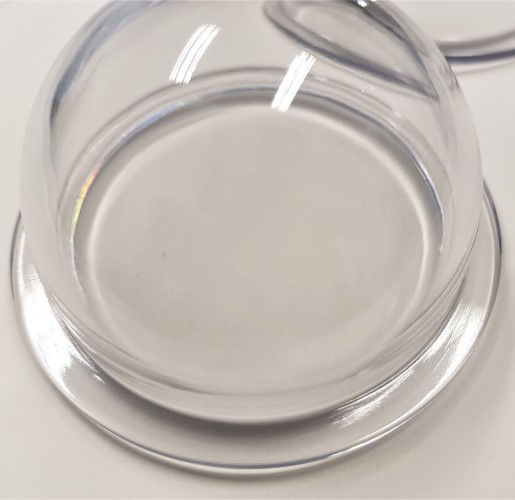Density (g/cm³)
For a homogeneous object, Density = Mass Divided By Volume. The higher the density, the tighter the particles are packed inside the substance. The Specific Gravity is the ratio of Density of the material to the Density of water at a specified temperature. It is common to use the density of water at 4°C as reference - at this point the density of water is at the highest i.e. 1 g/cm3. So Specific Gravity of less than “1” means that the material will float in water.
- ABS
g/cm³- PC
g/cm³- PP
g/cm³- ACETAL(POM)
g/cm³- ACRYLIC(PMMA)
g/cm³- NYLON
g/cm³- HDPE
g/cm³
Snapshot of Acrylic Plastic
Acrylic (PMMA) plastic Description
Also known as PMMA (PolyMethyl-MetaAcrylate) is an amorphous thermoplastic material with very good optical properties. Acrylic is often used as a glass substitute. Acrylic is hard and stiff but brittle and notch sensitive.
Advantages of Acrylic parts
Excellent optical clarity, Good Abrasion Resistance, Excellent environmental stability, Good Heat Resistance, Good Chemical Resistance. Flammable but low smoke emission.
Acrylic (PMMA) plastic Uses
Automotive light covers, Lighting fixtures, Clear Bottles and Container prototypes, Lenses, Shop-fittings, Aircraft glazing, Novelty display cases, Signs, Appliances, Modern furniture, Jewellery items, Medical/Healthcare Applications. PMMA has a good degree of compatibility with human tissues.
Finishing examples of Acrylic prototypes
Available Finishes
- Machine Finish
- Highly Polished (like Lens)
- Translucent bead-blast finish (like foggy lamp shade)
- Tinted finish
- Painted finish
Acrylic (PMMA) material Spec
| Property | Data |
|---|---|
Density
|
1.18 g/cm3 |
Water Absorption-24 Hours (%)
|
0.50 % |
Tensile Strength (Mpa)
|
70 Mpa |
Tensile Modulus (GPa)
|
2.80 GPa |
Flexural Strength (MPa)
|
96 Mpa |
Vicat Softening Temp (℃)
|
85℃ |
Heat Deflection Temp - 1.8MPa (℃)
|
98℃ |
Coefficient of Friction
|
0.50 |
Note: This Data is indicative only
|
|
Further considerations
PMMA is an economical alternative to Polycarbonate (PC) when extreme strength is not necessary. Common trade names of Acrylic include Plexiglas, Lucite and Perspex. Large and difficult parts can be easily glued.
Limitations
Poor impact resistance, subject to stress cracking, Not suitable for use with chlorinated or aromatic hydrocarbons. Brittle in nature, PMMA swells and dissolves in many organic solvents.





